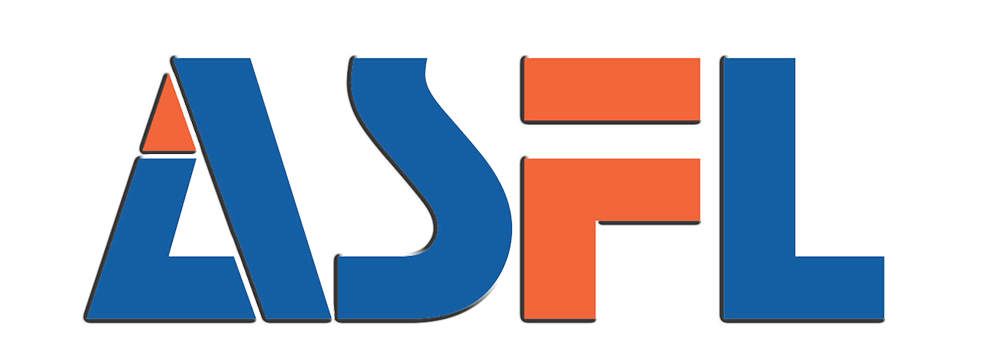Understanding Contamination Risks and Hygiene Principles in Glass Bottle Filling Machines
Common Contamination Risks in Beverage Filling Systems
Biofilm formation and particulate contamination account for 64% of microbial outbreaks in glass bottle filling operations (Food Safety Magazine 2022). High-risk zones include:
- Fill nozzles prone to sugar residue buildup, especially in juice bottling
- Conveyor tracks that accumulate glass dust and lubricants
- Valve seats capable of harboring Listeria monocytogenes in dairy applications
These areas require targeted cleaning protocols due to their exposure to product residues and difficulty in access during routine sanitation.
Critical Control Points in Glass Bottle Filling Machine Hygiene
Closed-loop CIP (Clean-in-Place) systems reduce contamination risks by 89% compared to manual cleaning, according to a 2023 beverage safety study. Key hygiene control points include:
- Use of 316L stainless steel for corrosion resistance and cleanability
- Maintenance of rinsing water quality using 0.2µm filtration
- Regular seal integrity checks, particularly during thermal cycling that can compromise gaskets
Implementing these measures ensures durable, repeatable sanitation performance across production cycles.
Case Study: Microbial Outbreak Linked to Inadequate Nozzle Cleaning
A 2021 FDA recall of 240,000 kombucha bottles was traced to Bacillus cereus contamination caused by inadequate nozzle cleaning. Post-investigation data revealed:
| Factor | Contamination Level |
|---|---|
| Unclean nozzles | 1,200 CFU/swab |
| Conveyor residues | 450 CFU/cm² |
| Following the incident, the facility implemented automated CIP cycles with 85°C rinse stages, which eliminated detectable pathogens in subsequent batches and restored compliance. |
The Role of Automation and Closed-Loop CIP Systems in Modern Lines
Modern filling lines integrate pressure-regulated CIP modules achieving 4D bacterial reduction (99.99% kill rate) through:
- Programmable sequences tailored to product viscosity
- Real-time conductivity monitoring of cleaning agents
- Automatic nozzle retraction to ensure full coverage during wash cycles
Automation minimizes human error and ensures consistent contact time, temperature, and chemical concentration—critical factors in effective sanitation.
Integrating Real-Time Monitoring for Proactive Sanitation
ATP bioluminescence testing combined with IoT sensors enables predictive hygiene management. A 2023 pilot program demonstrated:
- 72% faster detection of biofilm formation
- 56% reduction in sanitation chemical usage
- 100% compliance with FSSC 22000 audit requirements
This shift from reactive to proactive sanitation allows operators to intervene before contamination escalates, improving both safety and efficiency.
Effective Cleaning Methods and Procedures for Glass Bottle Filling Equipment
Step-by-Step Sanitation: Pre-Rinse, Clean, Rinse, Sanitize, Dry
A validated five-stage cleaning process reduces microbial counts by 99.8% in glass bottle filling machines (Food Safety Journal 2023). The sequence is as follows:
- Pre-rinse: 60°C water removes loose debris without setting proteins.
- Alkaline clean: pH 10–12 solutions dissolve organic residues like sugars and fats.
- Intermediate rinse: Filtered water below 45°C eliminates detergent traces and prevents protein denaturation.
- Sanitize: Peracetic acid at 100–200 ppm delivers a 5-log pathogen reduction.
- Dry: HEPA-filtered airflow removes moisture, eliminating conditions for microbial regrowth.
Each stage must be verified for duration, flow rate, and temperature to ensure efficacy.
Rinsing and Drying Techniques to Prevent Microbial Residue
| Technique | Parameters | Effectiveness |
|---|---|---|
| Turbulent rinsing | 2-3 bar pressure | Removes 95% of detergent residues |
| Laminar airflow drying | 0.45 m/s velocity | Achieves <5% residual moisture |
Air-drying or insufficient drying increases bacterial regrowth risk by 40% within two hours, making controlled drying essential for hygiene assurance.
Safe Handling and Cleaning of Mechanical Components
Before cleaning servo motors or gearboxes, always isolate power sources. Use food-grade lubricants compatible with stainless steel surfaces and avoid abrasive tools that damage passivation layers. After reassembly, perform torque verification to maintain fill nozzle accuracy within ±0.5ml, ensuring both hygiene and precision.
Component-Specific Cleaning: Valves, Fill Nozzles, Conveyors
- Rotary valves: Soak in 4% citric acid solution to dissolve mineral scale
- Fill nozzles: Ultrasonic cleaning at 40 kHz removes biofilm in under 8 minutes
- Conveyor belts: Steam-vacuum combination reduces allergen cross-contact by 92%
Tailoring methods to component design enhances cleaning effectiveness while preserving equipment life.
Best Practices for Manual vs. Automated Cleaning Processes
Automated CIP systems offer 30% faster cycle times than manual cleaning but depend on validated chemical concentration sensors for consistency. Reserve manual cleaning for complex assemblies such as check valves, using color-coded tools to prevent cross-contamination between zones.
Types of Cleaning Agents Suitable for Glass Bottle Filling Machines
Four primary types dominate maintenance in glass bottle filling systems:
- Alkaline detergents for removing organic residues
- Acidic solutions to dissolve mineral scale
- Enzymatic cleaners targeting protein-based soils
- Peroxide-based sanitizers for broad-spectrum microbial control
Modern formulations often combine functionalities to support multi-phase cleaning cycles, aligned with industry cleaning guidelines.
Evaluating Chemical Efficacy and Compatibility with Equipment Materials
Getting good cleaning results means finding the right balance between killing microbes and not damaging materials. Stainless steel can handle those strong alkaline cleaners around pH 10 to 12, but watch out for rubber seals which start breaking down once things get above pH 9. Take this real world scenario: when using a 2% caustic soda solution, it takes about 8 minutes at 60 degrees Celsius to knock down nearly all biofilm buildup. However, throw some aluminum parts into the mix and they'll start showing signs of damage within just 5 minutes. The bottom line is that each cleaning system needs its own sweet spot for how long chemicals sit on surfaces, what strength they're used at, and the actual temperature conditions during cleaning.
Environmental, Health, and Safety Considerations in Chemical Selection
NSF/3A certification mandates less than 3 ppm chemical residue on food-contact surfaces. Facilities using non-compliant agents face a 47% higher likelihood of contamination recalls (FDA 2023). Chlorine-based sanitizers require triple the ventilation of peroxide alternatives, significantly increasing operational costs and safety risks.
Transitioning to Eco-Friendly and Sustainable Cleaning Solutions
Biodegradable lactic acid sanitizers now achieve equivalent 5-log microbial reduction compared to traditional chlorinated alkalines, with 60% lower water consumption. A 2023 survey shows 63% of beverage plants prioritize suppliers offering USDA-certified bio-based cleaning systems, driven by sustainability goals and carbon tax considerations.
Steam Sterilization and Thermal Sanitation Techniques for High-Level Hygiene
Advantages of Steam in Sterilizing Glass Bottles and Filling Lines
Steam sterilization knocks out about 99.99% of microbes without any chemical residue left behind, which means there's no need to rinse equipment after treatment according to research from Food Safety Journal last year. The way steam transfers heat so quickly makes sure it reaches all those tricky spots on complex machinery such as fill nozzles and where conveyors connect together. Looking at data from 2022, facilities using steam saw E. coli levels drop by around 92% when compared with old fashioned manual cleaning methods. This really shows why steam works better than alternatives especially when production speeds are high.
Implementing Steam-in-Place (SIP) Systems in Filling Operations
SIP systems automate the sterilization process by running dry saturated steam through equipment at around 121 degrees Celsius for roughly 15 to 20 minutes. This method works on all sorts of components including pipes, valves, and storage tanks without needing to take anything apart first. A major player in the beverage sector saw some impressive results too - they cut their downtime by about 40 percent and saved nearly 30% on water consumption once they switched to this system according to Beverage Industry Report from last year. When paired with continuous monitoring capabilities, these systems help facilities stay compliant with both ISO 22000 requirements and FDA regulations. That makes them particularly attractive for companies looking to expand their production capacity while maintaining strict hygiene standards throughout growth phases.
Standard Steam Sterilization Procedures for Glass Components
| Parameter | Value | Outcome |
|---|---|---|
| Temperature | 121°C (250°F) | Eliminates vegetative bacteria |
| Pressure | 15 psi | Ensures steam penetration |
| Exposure Time | 20–30 minutes | Destroys heat-resistant spores |
Protocols must include pre-vacuum phases to remove air pockets and post-cycle drying to prevent condensation—a known vector for recontamination.
Autoclaving and High-Temperature Steam for Complete Microbial Kill
Autoclaving at 134°C for 5 minutes achieves a 6-log reduction of Bacillus stearothermophilus, serving as the benchmark for sterility assurance (PDA Technical Report, 2022). This method is especially critical in carbonated beverage lines where residual sugars promote biofilm development.
Dry Heat vs. Steam Sterilization: When to Use Each Method
Dry heat (160–180°C for 2–4 hours) suits moisture-sensitive components like electronic sensors but is energy-intensive and slow. Steam offers 4x faster cycle times for equivalent microbial reduction (Thermal Processing Review, 2023), making it preferable for glass and stainless steel. The choice depends on material compatibility and production throughput needs.
Modern facilities increasingly adopt industrial steam generators, as highlighted in the 2024 Beverage Sanitation Guidelines, to balance hygiene efficacy with regulatory and sustainability demands.
Developing and Verifying a Consistent Cleaning Schedule for Regulatory Compliance
Daily, Weekly, and Monthly Maintenance and Cleaning Tasks
Structured cleaning schedules reduce contamination risks by 30% compared to ad-hoc practices (2023 food manufacturing analysis). Recommended tasks include:
- Daily: Nozzle disassembly, conveyor sanitization
- Weekly: Valve lubrication, pipework inspection
- Monthly: Deep cleaning of filler heads and sensors
This tiered approach ensures continuous hygiene while preventing wear-related failures.
Standard Operating Procedures (SOPs) for Reliable Execution
SOPs standardize critical parameters such as chemical concentration (e.g., 2% caustic soda at 65°C) and rinse duration. Facilities using centralized digital platforms for SOP management achieve 98% audit readiness, compared to 72% with paper-based systems (2023 industry report).
Verification Through ATP Testing and Microbial Swabbing
ATP bioluminescence testing detects organic residue in under 15 seconds and correlates 95% with microbial counts (FDA 2022). When paired with weekly swabs for L. monocytogenes and E. coli, this dual-method verification reduces post-cleaning contamination events by 41%.
Documentation, Audits, and Compliance with Food Safety Standards
Maintaining ISO 22000-aligned records—including time-stamped logs and staff certifications—streamlines regulatory audits. Proactive sites conduct quarterly mock audits, resolving 83% of issues before official inspections. Automated temperature and pressure logs provide tamper-proof evidence for compliance submissions.
Frequently Asked Questions
What are the main contamination risks in glass bottle filling operations?
Biofilm formation and particulate contamination are major risks, especially around fill nozzles, conveyor tracks, and valve seats.
How effective are CIP systems compared to manual cleaning?
Closed-loop CIP systems reduce contamination risks by 89% compared to manual cleaning.
What cleaning agents are suitable for glass bottle filling machines?
Alkaline detergents, acidic solutions, enzymatic cleaners, and peroxide-based sanitizers are commonly used.
How does steam sterilization benefit filling lines?
Steam sterilization provides 99.99% microbial reduction and doesn't leave chemical residues, making it ideal for high-speed production lines.
Table of Contents
-
Understanding Contamination Risks and Hygiene Principles in Glass Bottle Filling Machines
- Common Contamination Risks in Beverage Filling Systems
- Critical Control Points in Glass Bottle Filling Machine Hygiene
- Case Study: Microbial Outbreak Linked to Inadequate Nozzle Cleaning
- The Role of Automation and Closed-Loop CIP Systems in Modern Lines
- Integrating Real-Time Monitoring for Proactive Sanitation
- Effective Cleaning Methods and Procedures for Glass Bottle Filling Equipment
- Types of Cleaning Agents Suitable for Glass Bottle Filling Machines
-
Steam Sterilization and Thermal Sanitation Techniques for High-Level Hygiene
- Advantages of Steam in Sterilizing Glass Bottles and Filling Lines
- Implementing Steam-in-Place (SIP) Systems in Filling Operations
- Standard Steam Sterilization Procedures for Glass Components
- Autoclaving and High-Temperature Steam for Complete Microbial Kill
- Dry Heat vs. Steam Sterilization: When to Use Each Method
- Developing and Verifying a Consistent Cleaning Schedule for Regulatory Compliance
- Frequently Asked Questions





